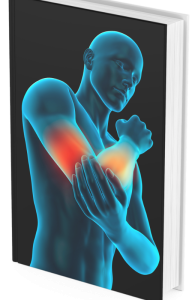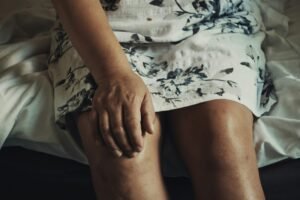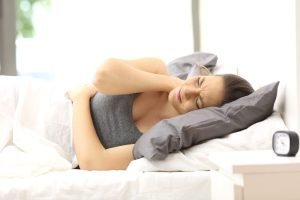So What Might Be Causing My Knee Pain?
For those who have suffered knee pain, this may cause much disablement and leave you unable to do the things you want in life be it just walking about without feeling pain or heaven forbid running, skiing and any activity that involves you having to move about.
This is why getting a person moving is so very important, there are many causes but I will concentrate on the 5 most common conditions that I see in practice.
“It is always important to get moving not just for life as without movement our whole system works below par and makes us more susceptible to ill health”
1. Osteoarthritis
Osteoarthritis is one of the most common conditions I see, much seen as we get older. Often called wear and tear, it is there to test us.
It is much more common after 50 and can be the result of old injuries to the knee where the cartilage surrounding the bone ends degenerate and in some cases flake off, this causes localised inflammation and usually some swelling and it makes it painful to weight bear and move about as the joint generally gets more irritated the more we use it.
We’ve all seen painful swollen knees, and there are things that can be done using Osteopathy and Acupuncture which can help relieve the pain and help give you increased range of movement. This along with graded exercises is the best way both to maintain your knees and get them back into the best shape possible.
2. Meniscus (Commonly Called Cartilage) Tears
Meniscus tears are what happens when small flaps of what is in effect fibrocartilge.
There are two kinds of tears, when youre younger they can happen when you suddenly twist your knee, this is followed by swelling and on many occasions an inability to fully flex the leg. There may also be a heard a clicking noise as the meniscus clicks over the bone. Some cases the knee may actually lock or give way.
Another common form of meniscal tear is what is called a degenerative tear. This is when the meniscus may fray at its edges or inside and tear. These happen as you get older and when I say older over 35! Symptoms are on the whole not quite as acute, and these dont end up needing surgery nearly as often.
3. Bursitis
Bursitis or what used to be called housemaids knee is a swelling that occurs usually on top of the kneecap (patella). This is basically an inflammation of a water pocket which sits between muscle to reduce friction. It comes about if this area becomes irritated for example kneeling on it whilst scrubbing floors, or praying too long. It is usually harmless but stops normal activity. In rare cases these can become infected when they can become very painful , hot and red.
4. Ligament Strains
Ligament strains are usually done to the inside of the knee (medial meniscus), sometimes to the outside of the knee (lateral meniscus). A more disruptive strain can happen to ligaments on the inside of the knee which attach the big bone of the femur to the tibia (Cruciate Ligaments).
Ligaments when strained take time to recover and if completely torn may require surgery.
These injuries normally come about after excess strain from injury. In the case of the cruciate ligaments it is high impact with flexing of the knee and twisting, whereas the medial and lateral ligaments are prone to injury from a sideways impact
5. Pain On The Back of the Kneecap (Chondromalacia)
Pain or achiness on the back of the kneecap may well be a sign that the cartilage there is starting to soften or degenerate. Very commonly found in people doing a lot of sports involving running or jumping especially if there is an imbalance of the muscles on the front of the leg (the quadriceps). This pain is especially felt going downstairs or running downhill where the downward forces go into the kneecap to aggravate it.
For those who have suffered knee pain, this may cause much disablement and leave you unable to do the things you want in life be it just walking about without feeling pain or heaven forbid running, skiing and any activity that involves you having to move about.
This is why getting a person moving is so very important, there are many causes but I will concentrate on the 5 most common conditions that I see in practice.
Next week I’ll talk about treatment that will get you back to do things you love doing including that old activity which we are rather good at – walking.
Conclusions
What I have done is give a summary of some of the main problems affecting the knee that come through the clinic door. in a future blog I’ll write about what we can do at Laurens Holve Healthcare to help these problems.
Let me know what you think and if there are any other topics you would like me to cover.
if you do have a bad knee give me a call or send an email and I can go over what can be done and see if I can be of any help





